 Ottoman Navy: Ironclads, also known as Lütf-ü Celil and Hifz-ur Rahman (1868-70), service until 1909.
Ottoman Navy: Ironclads, also known as Lütf-ü Celil and Hifz-ur Rahman (1868-70), service until 1909.
The Lütf-ü Celil class were ironclad originally ordered in France for the Eyalet of Egypt, but confiscated by the Ottoman Empire while under construction. The Lütf-ü Celil and Hifz-ur Rahman were the first Turkish sea-going monitors, mounting a main battery of two 225 mm (8.9 in) Armstrong guns and two 178 mm (7 in) Armstrong guns in two revolving gun turrets. They saw action during the Russo-Turkish War of 1877–1878 in which Lütf-ü Celil was sunk on the Danube. Hifz-ur Rahman fought Russian minelayers at the mouth of the Danube, survived the war but was laid up for twenty years, until mobilized at the Greco-Turkish War in 1897, in poor condition. She sold in 1909 and broken up.
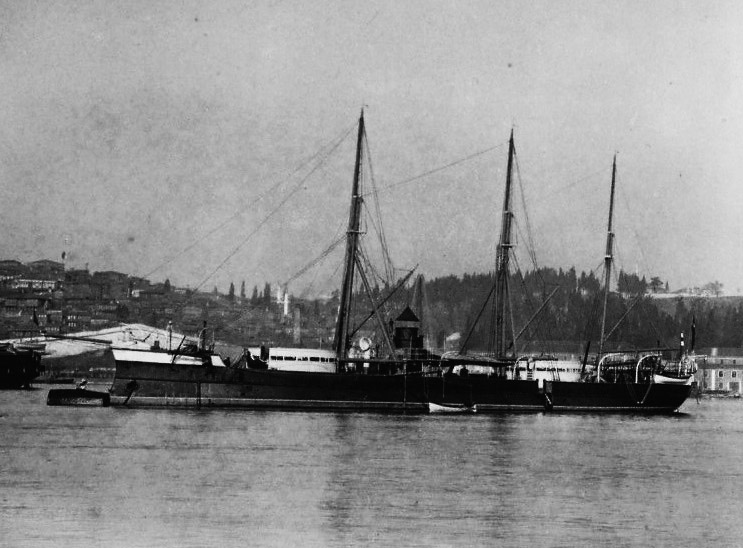
Design of the class
Development
In the early 1860s, the Eyalet of Egypt, at the time a semi-independent province of the Ottoman Empire, ordered several ironclads for its fleet. They were part of a rearmament program to challenge the central government in Istanbul 20 years after the Second Egyptian–Ottoman War. Four ironclads were concerned, including two classic broadside ships, and two turret monitors. At the time, the Ottoman Navy had nothing comparable. Called the Lütf-ü Celil-class they were ordered in 1866 from France, at Forges et Chantiers de la Gironde near Bordeaux. The crisis was deflated after an Ottoman mobilization and lengthy negotiations. It was agreed that the Egyptian ironclads, would be paid for to the condition of being integrated in the Ottoman Navy, conceding having Egyptian sailors on board. This dealk including Lütf-ü Celil and Hifz-ur Rahman. They were transferred on paper, while still under construction, to the central government on 29 August 1868. Both ships weer eventually completed in March 1870.
Hull and general design
In 1868 when they were ordered, turret ships were the new craze, as rams, after broadside and then central battery ships. Only the US, France and Britain produced turret ships at the time, with Germany joining soon. The Lütf-ü Celil class were relatively small turret ships, 64.4 m (211 ft 3 in) long overall but 62.18 m (204 ft) between perpendiculars. They had a beam of 13.6 m (44 ft 7 in) and a draft of 4.4 m (14 ft 5 in). The hull was made of iron framing, with a ram bow and raised forecastle and sterncastle for better seakeeping. To avoid the hurrican deck being awash in heavy weather and still enable a clear field or fire for the main turrets, there were folding, hinged bulwarks on both sides. They displaced 2,540 metric tons (2,500 long tons) on normal load, 1,741 t (1,714 long tons) fully laded, which was much smaller than the Prins Hendrik der Nederlanden we just saw, and more comparable to the earlier British Scorpion-class ironclad turret ships. The crew comprised 12 officers and 110 enlisted men, and they had three masts.
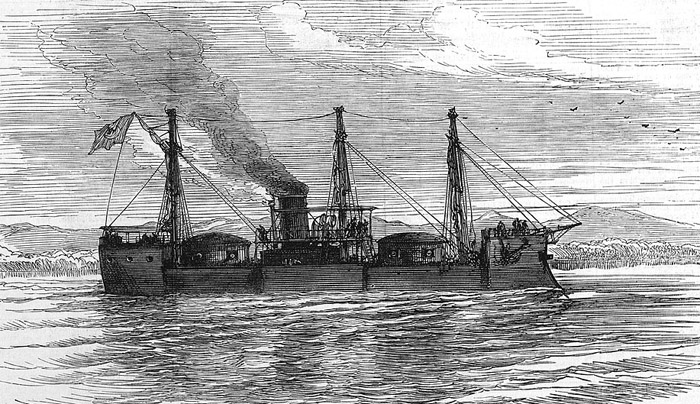
Powerplant
The Lütf-ü Celil class were powered by a single horizontal compound engine, driving two screw propellers instead of a single one, for extra agility when using her ram. Steam came from two coal-fired locomotive boilers, trunked into a single funnel amidships, non telescopic. This powerplant was rated at 2,000 indicated horsepower (1,500 kW). The class was conntracted for a top speed of 12 knots (22 km/h; 14 mph). But this went down over time and the lack of proper maintenance. In 1877 when the war with Russia started, they were only capable of 10 knots (19 km/h; 12 mph). Lütf-ü Celil had 300 t (300 long tons; 330 short tons) of coal on board, for an estimated range of c1200 nm, bu no sources gives a precise number at all. The extra barque rig with three masts was limited to a schooner sail type.
Protection
The Lütf-ü Celil class were ironclads, protected by wrought iron plates, notably an armored belt 140 mm (5.5 in) thick, tapering down too 117 mm (4.6 in) at both ends, at the bow and stern. This belt extended 0.76 m (2 ft 6 in) above and below the waterline so a total of just 1,52 meters or 5 inches. Above the main belt, there was a strake of armor 76 mm (3 in) thick. It protected the turret bases as well as the magazines and machinery spaces. The upper side armor connected to the armored deck, 38 mm (1.5 in) thick. The turrets themselves had sandwiches with iron and teak, but the outer plating alone was 140 mm thick (5.5 inches).
Armament
Lütf-ü Celil and Hifz-ur Rahman were completed with two 225 mm (8.9 in) muzzle loading Armstrong guns and two 178 mm (7 in) Armstrong guns in their own revolving gun turrets fore and aft, both centerline. The 225 mm guns in the forward turret and 178 mm guns aft of the main mast were hand-operated and slow-turning. There was no more artillery.
8.9-in/14 Armstrong
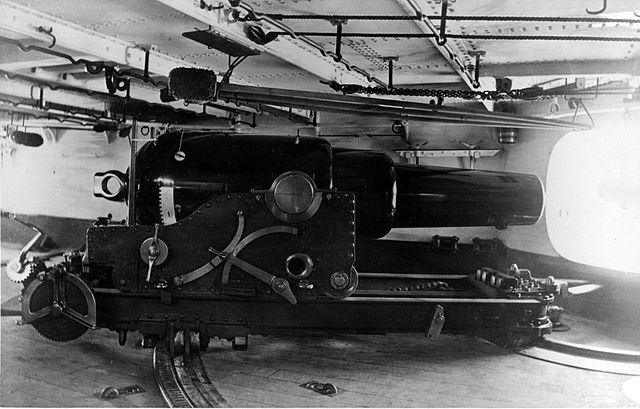
The Lütf-ü Celil class had two 229 mm (9 in) muzzle loading Armstrong guns in the forward turrets. As for performances, the RML 9-inch Armstrong Gun was a popular model, introduced in 1867 and also used by the Netherlands and Spain.It weighted 12,300 kg and was 3.962 m long for an exact caliber of 229 mm and fired shells at a muzzle velocity of 1,476 feet per second (450 m/s)
7-in/14 Armstrong
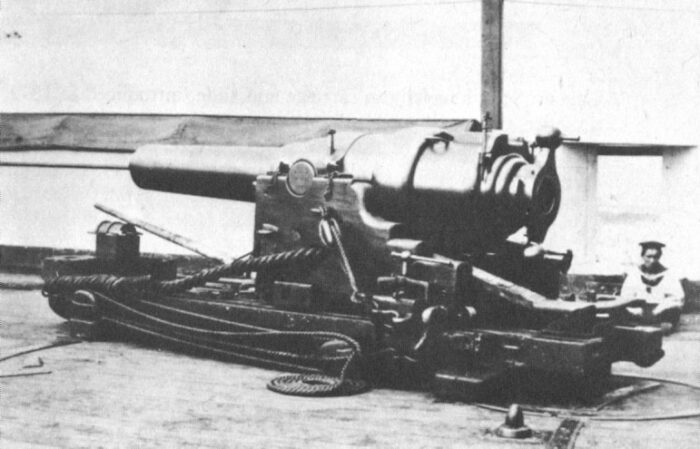
This model was born in 1861. The Barrel length was 99.5 inches (2.527 m) bore (14.21 calibres) and it fired a 90 to 109 pounds (40 to 50 kg) shell with an exact caliber of 177.8 mm. The breech was of the Armstrong screw type with vertical sliding vent-piece block.
Muzzle velocity was 1,100 feet per second (340 m/s) and max range 3,500 yards (3,200 m).
Ugrades and reconstructions
In 1875, both vessels were at last given a modern single 120 mm (4.7 in) Krupp gun.
In 1891—1894, Hifz-ur Rahman was partially rearmed with her forward turret fitted with a pair of Krupp 150 mm (5.9 in), and four 37 mm (1.5 in) Hotchkiss guns, two 25.4 mm (1 in) Nordenfelt for protection against torpedo boats. She was discarded in 1908 as such.
⚙ specifications |
|
| Displacement | 2,047 metric tons (2,015 long tons; 2,256 short tons) |
| Dimensions | 66.4 x 12.9 x 5 m (217 ft 10 in x 42 ft 4 in x 16 ft 5 in) |
| Propulsion | 1 shaft compound steam engine, 4× box boilers 1,750 ihp (1,300 kW) |
| Speed | 12 knots (22 km/h; 14 mph) |
| Range | 300t coal, c2500 nm/8 kts |
| Armament | 1× 229 mm (9 in) Armstrong gun, 4 × 178 mm (7 in) Armstrong guns |
| Protection | Belt: 152 mm (6 in), Battery, Barbette: 114 mm (4.5 in) |
| Crew | 170 |
Career of the Lufti Djelil class
 Lütf-ü Celil
Lütf-ü Celil
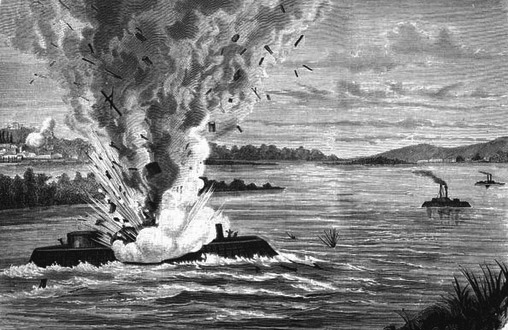
Lütf-ü Celil (“Divine Grace”) was ordered from Forges et Chantiers de la Gironde (FCG) shipyard, Bordeaux, in 1867. She was laid down in 1868, originally ordered by the Khedivate of Egypt but after threats from Sultan Abdülaziz asking for surrindering the fleet on 5 June 1867, there were lengthy negotiations until she was formally transferred to the Ottoman Empire on 29 August 1868. She was launched in 1869, completed for sea trials in January 1870, commissioned in March.
After completion, she was sent to Crete to assist quelling the Cretan Revolt of 1866–1869. However the Ottoman fleet under Hobart Pasha remained largely inactive, with theoretical training due to the lack of finances, reading translated British instruction manuals. Lütf-ü Celil was in the II Squadron, Asiatic Fleet, with Hifz-ur Rahman, Avnillah and Muin-i Zafer. She was only activated every summer for short cruises, just checking her machinery was on order, between the Golden Horn and Bosporus. In 1875 she received a single additional 120 mm Krupp gun.
She was fully mobilized in September 1876 as tensions rose with Russia, not helped by an insurrection in Bosnia by mid-1875, Serbia declaring war by July 1876. Russia backed Serbia and deckared war on the Ottomn Empire, leading to hostilities starting on 24 April 1877. Lütf-ü Celil and Hifz-ur Rahman given their limited freeboard and draught were in the Danube Squadron, to preventing Russian forces from crossing the river. On 11 May off Izmail they were ambushed by Russian artillery, using on them 6-inch (152 mm) mortars, 25-pounder rifled guns. It seems one shell entered the boiler room and caused a large explosion, destroyed her entirely. The river monitor Feth-ül İslam picked up 20 survivors while 160 officers and men went down with the ship.
 Hifz-ur Rahman
Hifz-ur Rahman
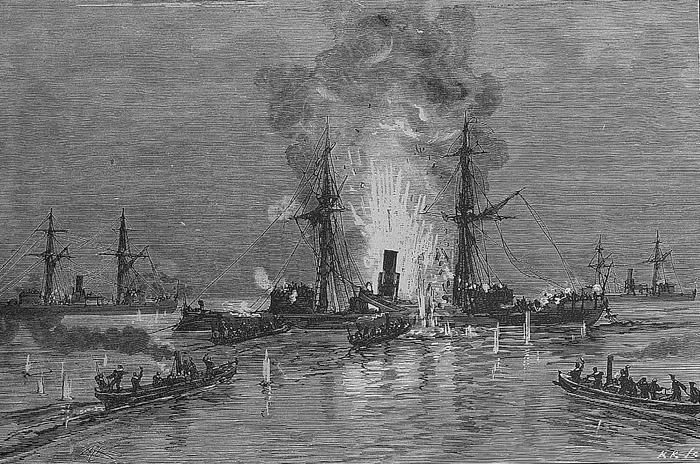
Hifz-ur Rahman (“Merciful Protector”) was ordered to the same yard, experienced the same fate. She was launched in 1869 (exact date unknown) and commissioned in March 1870 and like her sister, she was sent to Crete to assist in the aftermath of the Cretan Revolt. Under Hobart Pasha her training was limited and if she was assigned to the II Squadron, Asiatic Fleet she only saw some service for a time every summer, just testing her machinery in a cruise between the Golden Horn and the Bosporus. Like her sister in 1875 she saw the addition of a Krupp 120 mm (4.7 in) gun.
Mibilized in September 1876 and fully recommissioned and operational from 24 April 1877 she was assigned to the Danube Squadron. Hifz-ur Rahman was stationed in Sulina, mouth of the Danube with Muin-i Zafer and Asar-i Şevket to defend the seaward approaches, supporting by three coastal fortifications. In November, a Russian flotilla attempted to lay a minefield off Sulina, bu they were driven off by Mukaddeme-i Hayir drove on 8 November. The Russians brought then with mortar-equipped gunboats and the engagement saw Hifz-ur Rahman hit and lost a boiler, being forced to withdraw after the loss of her sister in similar circumstances earlier.
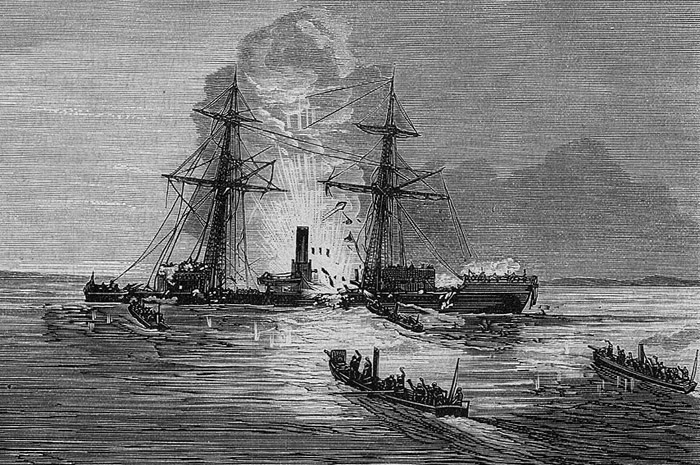
Explosion of Hifz-ur Rahman after a Russian gunboat attack on the Danube.
She was laid up in Constantinople in 1878 and completely inactive for twenty years, not even for annual summer cruises. In the mid-1880s, the neglected Ottoman ironclad fleet was the object of a thorough inspection, revealing Hifz-ur Rahman was no longer operative. Between rust and hulls badly fouled, uncleaned machinery, stuck mechanisms, she was no more than a floating hulk. The British naval attache announced that at least six months would be necessary to have the ship operational again. She had a one-third crew that was trying to restore the ship, and with a tension flaring up with Greece in 1886, the fleet was atempted to be fully crewed, but their state was so poor the admiral renounced to leave the Golden Horn. She was laid up again. Her only sortie was done at 4-6 knots (7.4 to 11.1 km/h; 4.6 to 6.9 mph). At last, she was modernized at the Imperial Arsenal in 1891-1894 with new 150 mm (5.9 in) Krupp guns, four 37 mm (1.5 in) Hotchkiss guns, two 25.4 mm (1 in) Nordenfelt guns.
Whe started the Greco-Turkish War in February 1897, she was in the II Squadron, but apart her modern armament, maintenance not had been done afterwards and she was declared unfit for combat. This was not only her general condition, but her crew was poorly trained. In April-May, she was part in symbolic sorties into the Aegean Sea for moral boosting purposes, just showing the flag. She was stationed at Morto Bay, mouth of the Dardanelles, protecting the remainder of ironclads further up the straits. Foreign observers reported this in the press and this became a public embarrassment for the government. Sultan Abdul Hamid II was forced to authorize a modernization program but Hifz-ur Rahman was not selected and instead decommissioned in 1909, placed on the disposal list on 31 July, sold for scrap on 11 November and BU.
Read More/Src
Books
Greene, Jack & Massignani, Alessandro (1998). Ironclads at War: The Origin and Development of the Armored Warship, 1854–1891. Pennsylvania: Combined Publishing. ISBN 978-0-938289-58-6.
Langensiepen, Bernd & Güleryüz, Ahmet (1995). The Ottoman Steam Navy 1828–1923. London: Conway Maritime Press. ISBN 978-0-85177-610-1.
Lyon, Hugh (1979). “Turkey”. In Gardiner, Robert (ed.). Conway’s All the World’s Fighting Ships 1860–1905. London: Conway Maritime Press. pp. 388–394. ISBN 978-0-85177-133-5.
Sturton, Ian. “Through British Eyes: Constantinople Dockyard, the Ottoman Navy, and the Last Ironclad, 1876–1909”. Warship International. 57 (2). Toledo: International Naval Research Organization. ISSN 0043-0374.
Wilson, Herbert Wrigley (1896). Ironclads in Action: A Sketch of Naval Warfare from 1855 to 1895. London: S. Low, Marston and Company. OCLC 1111061.
Links
https://navypedia.org/ships/turkey/tu_bb_lutfu_celil.htm
https://en.wikipedia.org/wiki/L%C3%BCtf-%C3%BC_Celil-class_ironclad


 Latest Facebook Entry -
Latest Facebook Entry -  X(Tweeter) Naval Encyclopedia's deck archive
X(Tweeter) Naval Encyclopedia's deck archive Instagram (@navalencyc)
Instagram (@navalencyc)


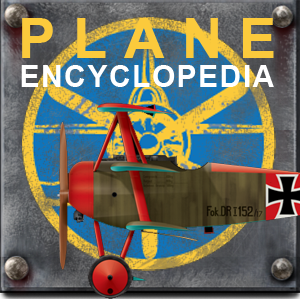
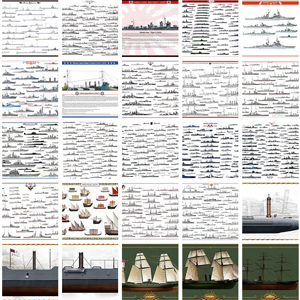

 French Navy
French Navy Royal Navy
Royal Navy Russian Navy
Russian Navy Armada Espanola
Armada Espanola Austrian Navy
Austrian Navy K.u.K. Kriegsmarine
K.u.K. Kriegsmarine Dansk Marine
Dansk Marine Nautiko Hellenon
Nautiko Hellenon Koninklije Marine 1870
Koninklije Marine 1870 Marinha do Brasil
Marinha do Brasil Osmanlı Donanması
Osmanlı Donanması Marina Do Peru
Marina Do Peru Marinha do Portugal
Marinha do Portugal Regia Marina 1870
Regia Marina 1870 Nihhon Kaigun 1870
Nihhon Kaigun 1870 Preußische Marine 1870
Preußische Marine 1870 Russkiy Flot 1870
Russkiy Flot 1870 Svenska marinen
Svenska marinen Søværnet
Søværnet Union Navy
Union Navy Confederate Navy
Confederate Navy Armada de Argentina
Armada de Argentina Imperial Chinese Navy
Imperial Chinese Navy Marinha do Portugal
Marinha do Portugal Mexico
Mexico Kaiserliche Marine
Kaiserliche Marine 1898 US Navy
1898 US Navy Sovietskiy Flot
Sovietskiy Flot Royal Canadian Navy
Royal Canadian Navy Royal Australian Navy
Royal Australian Navy RNZN Fleet
RNZN Fleet Chinese Navy 1937
Chinese Navy 1937 Kriegsmarine
Kriegsmarine Chilean Navy
Chilean Navy Danish Navy
Danish Navy Finnish Navy
Finnish Navy Hellenic Navy
Hellenic Navy Polish Navy
Polish Navy Romanian Navy
Romanian Navy Turkish Navy
Turkish Navy Royal Yugoslav Navy
Royal Yugoslav Navy Royal Thai Navy
Royal Thai Navy Minor Navies
Minor Navies Albania
Albania Austria
Austria Belgium
Belgium Columbia
Columbia Costa Rica
Costa Rica Cuba
Cuba Czechoslovakia
Czechoslovakia Dominican Republic
Dominican Republic Haiti
Haiti Hungary
Hungary Honduras
Honduras Estonia
Estonia Iceland
Iceland Eire
Eire Equador
Equador Iran
Iran Iraq
Iraq Latvia
Latvia Liberia
Liberia Lithuania
Lithuania Mandchukuo
Mandchukuo Morocco
Morocco Nicaragua
Nicaragua Persia
Persia San Salvador
San Salvador Sarawak
Sarawak Uruguay
Uruguay Venezuela
Venezuela Zanzibar
Zanzibar Warsaw Pact Navies
Warsaw Pact Navies Bulgaria
Bulgaria Hungary
Hungary

 Bundesmarine
Bundesmarine Dutch Navy
Dutch Navy Hellenic Navy
Hellenic Navy Marina Militare
Marina Militare Yugoslav Navy
Yugoslav Navy Chinese Navy
Chinese Navy Indian Navy
Indian Navy Indonesian Navy
Indonesian Navy JMSDF
JMSDF North Korean Navy
North Korean Navy Pakistani Navy
Pakistani Navy Philippines Navy
Philippines Navy ROKN
ROKN Rep. of Singapore Navy
Rep. of Singapore Navy Taiwanese Navy
Taiwanese Navy IDF Navy
IDF Navy Saudi Navy
Saudi Navy Royal New Zealand Navy
Royal New Zealand Navy Egyptian Navy
Egyptian Navy South African Navy
South African Navy






























 Ukrainian Navy
Ukrainian Navy dbodesign
dbodesign